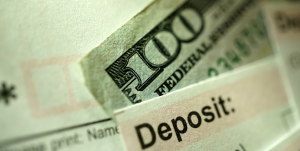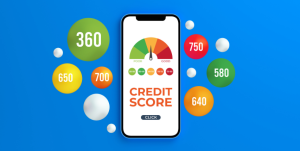Budgeting basics
19 March 2023

Everyone can use a budget. Whether you’re just looking to understand your spending or trying to make some big change, budgeting can help you take control of your finances. We break down how to create a budget that works – without having to give up that needed morning coffee run.
Planning:
Set Clear Financial Goals
The first step in effective budgeting is setting clear financial goals. Whether short-term or long-term, your goals will shape your budgeting strategy. Identify your priorities, such as creating an emergency fund, paying off student loans, or saving for a vacation. Having specific goals will give your budget purpose and motivation.
Understand Your Income
Knowing how much money you have coming in is crucial for creating a realistic budget. Calculate your monthly income, including your salary, bonuses, and any other sources of revenue. If your income fluctuates, use an average or a conservative estimate to ensure your budget remains manageable.
Track Your Expenses
Understanding where your money goes is the key to creating a good budget. Track your expenses for at least a month to get a read on your current spending. Categorize them into fixed expenses (e.g., rent, utilities), variable expenses (e.g., groceries, transportation), and discretionary spending. This process will reveal spending patterns and areas where you can cut back.
Types of Expenses
Fixed Expenses: expenses that remain the same each month. This can include rent or housing payments, insurance, and more. Payments that are made quarterly or yearly should be split into monthly numbers to incorporate into your budget.
Variable Expenses: expenses that are still necessary, but you cannot give an exact number for each month. This can include utilities, groceries, transportation, and more.
Discretionary Spending: expenses that are not necessary, such as entertainment, takeout, and shopping. While this can (and should) still fit into your budget, it’s where you have room to save.
Creating:
Differentiate Between Needs and Wants
Distinguishing between needs and wants is crucial for budgeting success. Needs are essential for survival, such as housing, food, and utilities, while wants are non-essential items or services. Prioritize your needs and allocate funds accordingly before indulging in wants.
Incorporate an Emergency Fund
Having an emergency fund provides a safety net and prevents you from relying on credit cards or loans during tough times. Three to six months’ worth of living expenses based on your fixed and variable expenses is ideal to have, but even just putting something aside each month specifically for emergencies will better prepare you in case of unexpected challenges.
Plan for Debt Repayment
If you have outstanding debts, incorporate a debt repayment plan into your budget. Allocate extra funds to pay down high-interest debts systematically. This not only reduces the financial burden over time but also helps improve your credit score.
Create a Realistic Budget
Based on your income and expenditure analysis, create a realistic budget that aligns with your financial goals. Allocate specific amounts to different expense categories, ensuring that you leave room for savings and debt repayment. Be honest with yourself and avoid setting unrealistic spending limits that may lead to frustration. The best budget is the one you know you can stick to.
Implementing:
Review and Adjust
Your budget is not a static document: regularly review your budget to ensure it remains relevant and effective. If you receive a salary increase, experience a major life event, or face unexpected expenses, adjust your budget to accommodate these changes.
Automate Savings
Saving money is a lot easier when it’s not a manual process – set automatic transfers to your savings on a schedule that works for you and your budget. This ensures that you consistently contribute to your financial goals without the temptation to spend the money elsewhere.
See Related Posts
popular articles
Categories
2
Today’s update
New Posts
blog read









